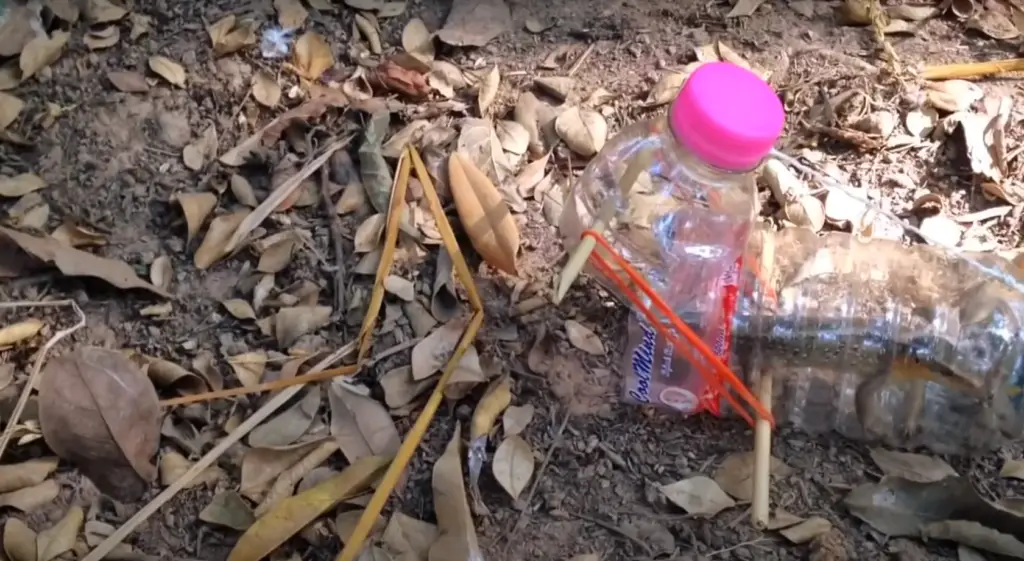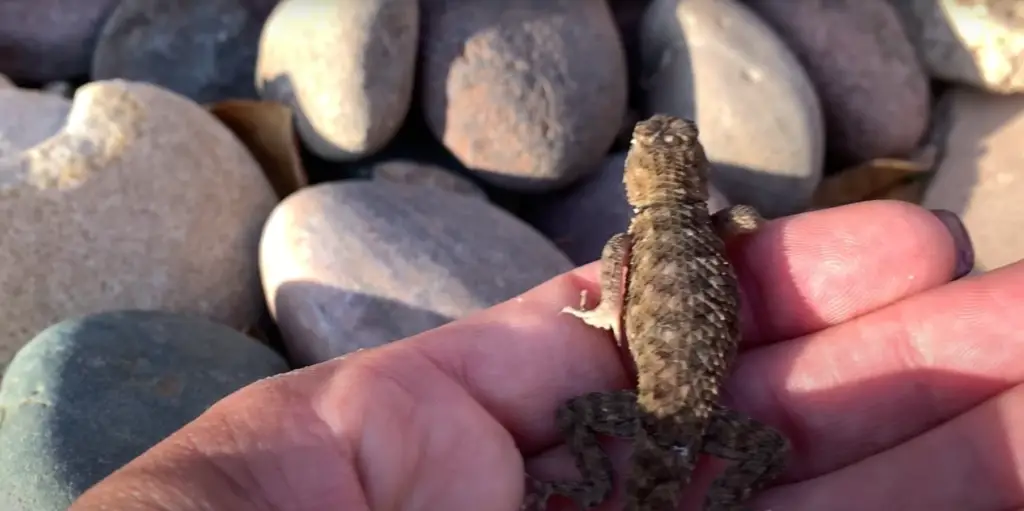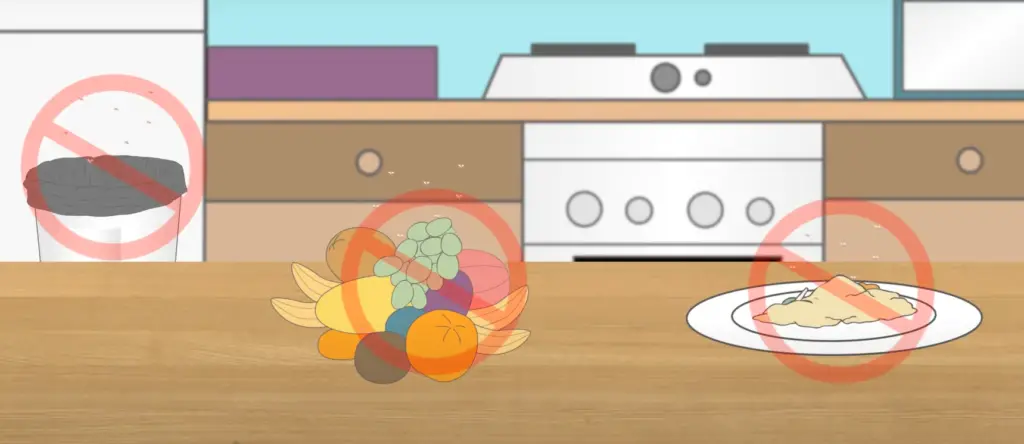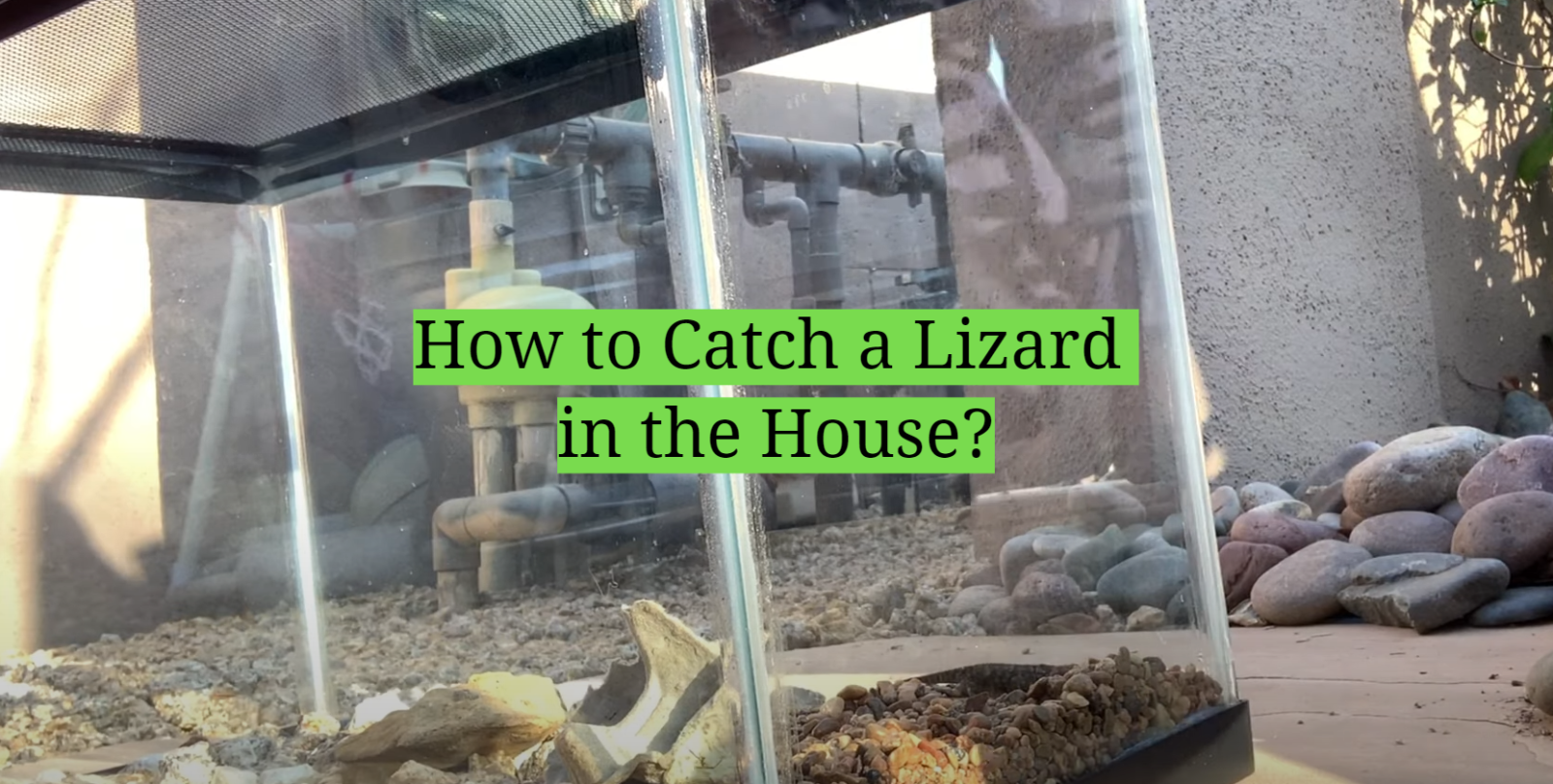Lizards are fascinating pets that require very little maintenance, making them ideal for those seeking an interesting but low-maintenance pet. These creatures come in a range of sizes and colors and can be found all over the world.
If you have a pet lizard or are considering getting one, it’s essential to know how to catch them safely and effectively. In this article, we’ll provide answers to some common questions about catching lizards and share some useful tips to help you get the job done with ease. So, let’s dive right in!
Brief Summary
Lizards found inside homes often enter seeking food and shelter. Catching them requires planning escape route blockades and watching for clues like droppings that indicate their presence. Slow, gentle movements using old cloths or nets allow covering and securing lizards in ventilated containers. Baiting with fruits or insects lures hidden lizards. Species protections must be checked before capturing. Once caught, lizards should be quickly transferred to cages and monitored, providing sufficient food and water until release. Prevention involves sealing cracks, removing debris, cleaning spills, and using repellents to deter entry. Comparison of likely hiding spots like under furniture or behind appliances based on accessibility and conditions helps target the search and capture. Proper handling minimizes bites or harm. Ultimately, humane trapping and relocation outdoors returns lizards to their habitat. With calm persistence and care, homeowners can remove lizards from houses safely. Catching and releasing is preferable to killing intruders seeking only basic needs. This maintains local ecosystems while removing unwanted reptilian guests.
How to Catch a Lizard in the House?
Catching a lizard in the house can be tricky, since they are small and can often hide in tight spaces. Here are some tips to help you catch them quickly and safely:
- Use an old cloth or rag to cover the lizard before catching it. This will keep it from running away while still allowing you to grab hold of it.
- Gently put the cloth over the lizard and scoop it up. Make sure to keep your hands away from its mouth, as lizards can bite if they feel threatened.
- Place the lizard in a container with air holes or mesh lid. This will help ensure that it can breathe while it is being transported or relocated.
- If you are able to catch the lizard, it is important to relocate it away from your house as soon as possible. You can release the lizard in a nearby park or wooded area where it will have a better chance of finding food and shelter.
Some lizards are protected, which means it is against the law to catch them. You should check with your local wildlife agency to make sure you are not breaking the law before you try to catch a lizard. [1]

Supplies Needed to Catch a Lizard
In order to successfully catch a lizard, you will need some supplies. Here is a list of items you should have on hand:
- An old cloth or rag
- A container with air holes or mesh lid (such as an aquarium)
- Protective gloves (optional)
- Bait (optional)
Having these supplies ready ahead of time will make it much easier to catch a lizard when the time comes.
Instructions
Start With A Simple Plan Of Action
Now that you have the supplies and knowledge necessary to catch a lizard in the house, it is time to put your plan into action. Here are some steps you can take:
- Locate the lizard by looking for signs of its presence such as droppings or tracks.
- Once you spot the lizard, move slowly and quietly so you don’t startle it.
- Position yourself in a way that will make it easy to cover the lizard with the cloth while still keeping your hands out of harm’s way.
- Quickly and gently place the cloth over the lizard and scoop it up.
- Transfer the lizard to the prepared container and close it securely.
- Take the lizard to a safe location away from your home and release it into its natural habitat.
Following these steps will help ensure that the process of catching a lizard in your house is successful and safe for both you and the lizard.

Block Escape Routes
Lizards are fast and agile, so it is important to block any escape routes before you attempt to catch them. Here are some tips on how to do this:
- Close any windows or doors in the room where you plan to catch the lizard.
- Seal off ventilation ducts and other small openings.
- Look for furniture or other items that the lizard may be able to hide under and temporarily remove them if possible.
- Set up barriers such as cardboard boxes or heavy objects at the entrance of the room so that the lizard is unable to escape. [2]
Look for Clues
If you are having trouble finding a lizard in your house, there are some things that can help. Look for signs like droppings or tracks, which may mean the lizard is close by. You can also try using bait to get the lizard to come out of hiding.
Consider the Lizard Species
It is important to choose the right lizard before trying to catch it.
You should check with your local wildlife agency if you have any questions.

Escape to the Outdoors
Once you have caught the lizard, it is important to let it go in a place where there are lots of trees and food. The best place would be a park. Be sure to let the lizard go far away from your house so it does not come back.
Stay Calm and Be Safe
It can be stressful to try to catch a lizard, but it is important to stay calm. If you need to, wear gloves. Move slowly and quietly, and keep your hands away from the lizard’s mouth.
By following these steps, you will have a better chance of catching the lizard without getting hurt. [2]
When You Catch Your Lizard, Get It In A Container Immediately
Once you have the lizard in your cloth, quickly put it in a container. Make sure the lid is on tight. Then provide food and air so the lizard can stay healthy until you find a new home for it.
Monitor Your Lizard Until It’s Safely In Captivity
Place the lizard in a container and check on it for a few days. Make sure that there is enough food and water and that the environment is good before releasing the lizard into its natural habitat.

Tips for Catching Lizards in the House
Now that you know what supplies you need, let’s take a look at some tips and tricks to help make catching a lizard easier:
- Look for lizards in areas with plenty of hiding places, such as under furniture and appliances or behind curtains.
- Set up bait to attract lizards. You can use pieces of fruit or vegetables, small insects, or mealworms.
- Be patient; it may take some time for the lizard to show up.
- Place a flashlight near where you think the lizard is hiding; this will make it easier to spot them in dark areas.
- Stay calm and move slowly; sudden movements may scare off the lizard.
Preventing Lizards From Entering Your Home
Now that you know how to catch a lizard in the house, let’s look into ways to prevent them from entering your home in the first place. Here are some tips for keeping lizards out:
- Seal up any cracks or openings in your home that may be allowing lizards to enter. Pay special attention to areas around windows and doors, as well as air conditioning units.
- Keep your lawn trimmed and keep piles of leaves and other debris away from your home. Lizards are attracted to these areas and may be looking for shelter in them.
- Clean up any spilled food or drinks quickly and often, as lizards will be drawn to it.
- Use a bug spray that is safe for humans and pets around the perimeter of your home, as this can keep lizards away.
Following these tips will help to ensure that your home remains lizard-free, and you won’t have to worry about trying to catch them again!

FAQ
What is the easiest way to catch a lizard?
The easiest way to catch a lizard is by using bait. Place some food in an area where you think the lizard may be hiding and wait for it to come out. Move slowly so as not to scare off the lizard, and use a cloth or net to catch it.
Do lizards bite?
Most lizards are not dangerous and will not bite. However, if the lizard is threatened or scared it may bite as a form of self-defence. It is important to move slowly and calmly when trying to catch a lizard, so that you do not scare it into biting.
What should I do once I have caught a lizard?
Once you have caught the lizard, put it in a container that has food and air. Check on the lizard for a few days before setting it free in its natural habitat.
How do you lure a lizard out of hiding?
The best way to lure a lizard out of hiding is to use bait. Place food such as pieces of fruit or vegetables, small insects, or mealworms in an area where the lizard may be hiding and wait for it to come out.
You can also place a flashlight near the hiding spot, which will make it easier for you to spot the lizard.
How do you make a lizard Trap at home?
You can make your own lizard trap using things around your house. You will need a container that the lizard can fit into, bait like fruit or vegetables, and something to cover the opening of the container like mesh or netting.
Place the bait inside the container and then place the mesh or netting over the opening so that the lizard can get in but not out. Check on your trap daily and release any lizards you catch back into their natural habitat.
What to do if a lizard comes into your house?
If a lizard comes into your house, the best thing to do is try to catch it. Use food as bait to lure the lizard out of its hiding spot, then use a net or cloth to gently capture it.
Once you have caught the lizard, put it in a container with food and air before releasing it back into its natural habitat.
Why do lizards come into your house?
Lizards may enter homes in search of food, shelter, and even mates. They are drawn to areas with lots of vegetation and piles of leaves or debris that can provide them with a safe place to hide.
Additionally, if there are openings around windows or doors, lizards may try to enter your home in order to escape from predators.
When is the best time to catch a lizard?
Lizards are more active in the morning and evening, so that is the best time to catch them. You can use bait to attract them out of their hiding places, and then gently capture them using a net or cloth. Always move slowly and calmly so as not to scare off the lizard.
Do lizards need water?
Yes, lizards need water to live. The best way to give them water is to put a small bowl of fresh water in their habitat. Make sure the bowl is not too deep and that there is always fresh water available.
Does the temperature matter for lizards?
Yes, the temperature does matter for lizards. Most types of lizards prefer warm temperatures and need an area to bask in the sun or under a heat lamp. The temperature should remain between 75-85 degrees Fahrenheit in order to keep them healthy and active.
Can lizards be kept as pets?
Lizards can make good pets if you take care of them properly. They need a large space to live in with lots of places to hide and at least one source of heat. They also need fresh food and water every day.
Do some research before getting a lizard to make sure you can take care of it the way it needs.
Which species of lizards make good pets?
There are many types of lizards that can make good pets. Some examples are geckos, skinks, iguanas, anoles, and chameleons. Each type of lizard has different needs.
This means it is important to learn about them before you buy one as a pet. Buy your lizard from a place where they are known for breeding healthy animals.
Is it safe to catch a lizard?
Yes, it is usually safe to catch a lizard if you do so gently and carefully. Use a net or cloth to capture them and then put them in a container with food and air until you can release them into their natural habitat. Make sure to move slowly and calmly so that you don’t scare the lizard.
Are lizards dangerous?
No, most lizards are not dangerous. However, if you encounter a large lizard or one that is behaving aggressively, stay back and call animal control for help. It is important to remember that all animals should be treated with respect and given their space.
What to do if I find a lizard in my house?
If you find a lizard in your house, the best thing to do is try to catch it. Use food as bait and then use a net or cloth to gently capture the lizard.
Once you have caught it, put it in a container with food and air before releasing it back into its natural habitat. Make sure to move slowly and calmly so that you don’t scare the lizard away.
How to release a lizard?
Before you release a lizard, make sure that it is healthy and has enough food and water. Put the lizard in a container with air holes so that it can breathe while you take it outside.
Once you have reached its natural habitat, carefully open the container and let the lizard go. Make sure there are no predators around that could harm it. Finally, give the lizard enough space to run away and hide.
Catching a lizard in your home can be scary, but you can do it if you have the right things and know how to do it. You need to understand how lizards act and what they need to live before you try to catch one.
Move slowly, use food as bait, and be careful when catching them. Finally, remember to put the lizard back in its natural habitat where it will be able to find food and shelter.
Can I handle a lizard?
If you are gentle and know what you are doing, you can pick up a lizard. Make sure to hold the lizard’s body and legs so they are even. Move slowly and don’t squeeze or pinch the lizard.
If you squeeze or pinch too hard, it will hurt the lizard. After you are done holding the lizard, wash your hands very well to prevent getting sick.
Which areas of the house are lizards likely to be found?
They also like to hide in dark corners, behind furniture and appliances, or under rocks. If you know where they usually hide, you can set up traps to catch them.
How to prevent lizards from entering the house?
The best way to keep lizards out of your home is to check the walls for cracks or holes.
Also, check any furniture you bring into your house for lizards or their eggs. Lastly, store food away and clean up any crumbs on the floor so that there is no food for the lizards.
Why should I catch a lizard and not kill it?
They are just looking for food and shelter, so killing them will only lead to more lizards coming in. It is best to catch them gently and release them back into their natural habitat where they can find food and shelter.
By following these tips, you should be able to catch a lizard in your house and release it safely back into its natural habitat. Knowing how lizards act, what they need to live, and how to prevent them from entering your house will help you keep them away for good.
Conclusion
Although it may be daunting to find a lizard in your home, there are some easy steps you can take to catch it.
First, try to identify where the lizard is hiding. Common hiding spots include under furniture or appliances, in closets or cabinets, and behind curtains.
Once you’ve found the Lizard, try to approach it slowly and calmly so as not to startle it. You can then use a cup or container to trap the Lizard inside. Finally, release the Lizard outside away from your home.
With these simple tips, catching a lizard in your house doesn’t have to be a stressful experience.
References
- https://www.sahmplus.com/catch-a-lizard-in-the-house/
- https://raleighpublicrecord.org/how-to-catch-a-lizard-in-the-house/
- https://www.cuteness.com/article/lost-gecko-hous














I’ve found that the best way to lure a lizard out of hiding is to set out a shallow dish of water. Lizards get thirsty too, so if you leave water out in an open area, the lizard will eventually smell it and come out for a drink. Just be patient and quiet, and wait for the lizard to emerge. Once it starts lapping up the water, you can easily grab or trap it. This method has worked well for me several times.
When I’ve spotted a lizard scurrying around inside, I’ve had success catching it by using a butterfly net. I’ll trail it slowly and quietly, then when I get close enough, I swoop the net down quickly to trap the lizard inside. Make sure to get a net with small enough holes so the lizard can’t wiggle free. Approach it calmly and deliberately. This technique has helped me catch several fast lizards in my home over the years.
I once had a lizard loose in my bedroom that kept hiding every time I’d enter. I learned that if I turned the lights off and used a flashlight, I could sneak up and surprise it. I’d scan the dark room with the flashlight beam and eventually spot the lizard’s eyes reflecting back. Moving slowly, I was able to corner it against the wall and capture it in a pillowcase. So using a flashlight to find their hiding spots in a dark room works remarkably well.
There was a lizard on the loose in my kitchen that was too quick to catch by hand. I cut the top off a plastic soda bottle and propped it up with a stick that had food underneath. When the lizard went for the food, I simply pulled the stick so the bottle would fall and trap it. Check under the bottle after it falls to make sure you caught the lizard. This basic trap is an easy way to catch lizards roaming inside your house.
Once I spotted a small lizard clinging to a curtain in our living room. I slowly approached with a glass jar in hand, then quickly trapped the lizard under the jar. I kept a piece of cardboard over the opening while I transported it back outside. For lizards that aren’t super speedy, you can simply use a large clear glass jar to cover and capture them. Just be ready to slide the cardboard underneath once the lizard is contained.
I’ve learned that lizards like to hide in warm, dark places like under appliances or behind furniture. During the day I’ll leave glue traps or sticky pads behind or under any potential hiding spots and check them at night when the lizard is active. More than once this has allowed me to capture a tricky lizard that kept escaping at night. Glue traps strategically placed can be an effective way to trap elusive lizards.
If there’s a lizard loose in your home, set out a box propped open with a stick and some tasty food inside to lure it in. Lizards smell food from far away, so something pungent like tuna should attract it. Once the lizard goes inside the box to eat, simply remove the stick so the box falls and traps it inside. Just be sure to check it frequently so you catch the lizard when it enters. This bait method has worked for me many times for capturing lizards.
One time I spotted a small lizard high on a wall that I couldn’t reach. I used a broom straw held together with duct tape to create a long stick. With a piece of strong tape at the end, I could easily lift and rapidly pull down once the tape made contact with the lizard. The key is approaching slowly before quickly yanking down once the tape has touched its body. This homemade lizard catcher is a handy tool for capturing lizards in hard to reach spots.
I once spent over an hour searching for a lizard hiding in my laundry room. Finally I gave up and walked away. When I came back 20 minutes later, the lizard had emerged from its hiding place thinking the coast was clear. Patience and quiet are key – resist the urge to wildly search. Simply leave the room for a while so the lizard relaxes its guard. More times than not, the lizard will eventually come out of hiding if you remain calm and wait it out.
If you know there’s a lizard somewhere in a room but can’t find it, try turning off the lights and using a flashlight held close to the floor. The lizard is likely to be down low, and the flashlight beam will illuminate its eyes if you scan it around methodically. Once spotted, you can use a gentle sweeping motion to coax the lizard into a corner for capture. I’ve found this flashlight technique very helpful for revealing a lizard’s hiding place at night.
Lizards love squeezed into tiny warm places, so check under and behind appliances when hunting for one. Focus on areas near heat sources like refrigerators, dryers, and electronics. Also scan walls, curtains, and furniture thoroughly. Use a flashlight to peer into every potential nook and cranny. Be patient and persistent in your search. Eventually you’ll spot the lizard tucked away in its hiding spot and can plan your capture strategy.
When trying to catch a speedy lizard loose in the house, use a gentle sweeping motion to coax it into an open area. Avoid rapid sudden movements that will scare the lizard and send it running. Once in the open, trap it quickly under a box or bowl. You can also try funneling it down a hallway into a room you can close off once it enters. Slow, steady movements are key to guiding the lizard where you want it to go for easy capture. This herding technique has helped me catch many quick lizards over the years.